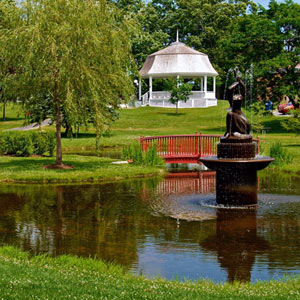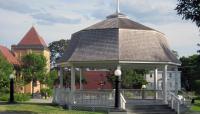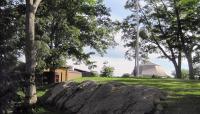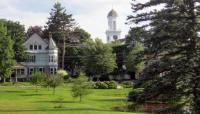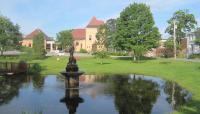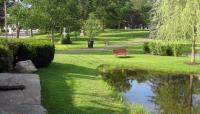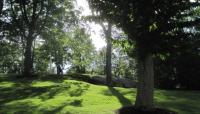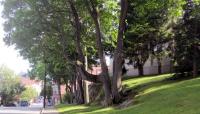In 1858 the city began acquiring land for City Park, making minor improvements until the Civil War stopped further work. The park’s character took shape in 1877 when the Cemetery and Park Board was formed. Superintendent, landscape gardener, and horticulturist John Ramsay was largely responsible for early designs, including the transformation of marshland into a pond with a rock fountain, boulder edges, and a footbridge. The park also included shade trees, open lawn, benches, flowerbeds, and pathways that divided a sloping lawn and converged at a highpoint overlooking the Kennebec River. Francis Fassett designed an octagonal bandstand in 1883, and George Harding designed the Romanesque Patten Free Library, completed in 1890; both architects were Bath natives. In the 1920s the original rock fountain was replaced with a three-tiered memorial fountain, and later by sculptor William Zorach’s Spirit of the Sea fountain in 1962.
Today the library, its additions, and parking occupy about one quarter of the five-acre site. The park’s historic character, use, and some detail from Ramsay’s design remains, in addition to Zorach’s fountain, a flagpole, and a 1740s British cannon salvaged from a Boston Harbor shipwreck and placed in the park in the mid-1800s. Contemporary additions include a gazebo built for the library’s centennial in 1989, benches, and additional footbridges. The Bath Historic District, added to the National Register of Historic Places in 1973, surrounds the park.




